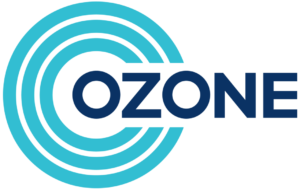By Lynne Ault, VP Sales at Adweek
For many of us, the 2022 planning season is well underway. You’ve worked tirelessly with your internal teams to update offerings, bargained with marketing to prioritize your needs and spent hours poring over media plans and proposals.
But in this hectic and stressful time of preparation, have you taken your clients’ experiences into account in order to make your planning more effective?
The role of marketer has never been more challenging. The scope, tech stack, budget and objectives are ever-changing as business needs evolve. In addition, marketing leadership has one of the shortest average tenures in the C-suite (only about 3 ½ years, rather than nearly 5 years for a CEO).
This overview could be an easy segue for me to talk about the importance of relationships and building rapport and trust in order to navigate all of these changes, but as many of us know, these are consultative table stakes. What is less often discussed – though equally important – are the foundations upon which these long lasting and fruitful relationships are built: the Emotional Intelligence (or Emotional Quotient) of it all.
What is EI? There are countless definitions (well, google counted, and will bring you over 235m hits, to be exact). For me, it’s the ability to take in all the signals, cues and context from client interactions and, through empathetic critical thinking, translate the information given into meaningful recommendations. Sounds easy, right?
Whether EI comes naturally to you or not, I’ve broken it down into some step-by-step processes that will help you better incorporate EI into your client relationships:
Creativity = Empathy
I once heard that sales is one of the most creative professions that exists today. While most of us might not see ourselves as creatives, how often has each of us had to shape an opportunity, program or product around a client’s needs? When speaking with a client, have you asked if they could create a program for themselves, what would they most like to see (or equally telling) not see?
Sales is not only an outlet for creativity, but also for showcasing that you’ve heard and interpreted the client’s needs effectively. There is not a company or client in this world who wants to be sold something “off the shelf.” Ultimately, bringing empathy to these interactions is about utilizing creativity as a vehicle for custom recommendations.
Stop Talking
We want to be proactive about our pitch, showcasing the best opportunities and what we think the client is asking for: but did we bother to listen?
Assumptions, whether about tactics or budgets, can be a hindrance to effective planning, of course, but also to the overall relationship between you and your client. Taking a beat at this critical time to literally shut up and allow your client to speak, hearing what they may (or may not) be offering is essential to any effective and long-lasting relationship.
I like to take a moment after every call and make notes about the points that were most insightful. Importantly, these can be campaign-related comments – information around KPIs, targeting and budget – but also, and of equal weight, comments about the point person and company as a whole – bandwidth, internal pain points/process and personal updates.
People are People
I was recently asked what my secret sauce is for being an effective consultative sales leader. In my experience, there is no secret sauce, no magic spell nor instant solution that will lead to success, but I have found that BEING A HUMAN and leading with empathy goes a long way to build meaningful and lasting relationships.
Being a human is just what it sounds like: showing up as a whole individual in your professional relationships and life. Fundamentally, whether you’re speaking to your main point of contact or the CMO, people are still people, they want the same things we all do: to feel seen, understood, and put at ease.
Remember, you are the public face of your company; the client may love the product/services, but you set the tone and drive the success of the relationship.
So I know what you’re thinking: “Great, another hat for me to wear during planning season, all while curating the best solutions, building out the proposal and managing internal expectations.” But chances are, if you are reading this, in a client-facing role and have a pulse, you’re already doing most of what I shared above.
The important thing to remember is to look up and take a moment at this pivotal time of the year to reassess. How can you anticipate, manage, and deliver great client experiences? How can you better be a listener? How can you be a human today?
Take a beat – you got this!









